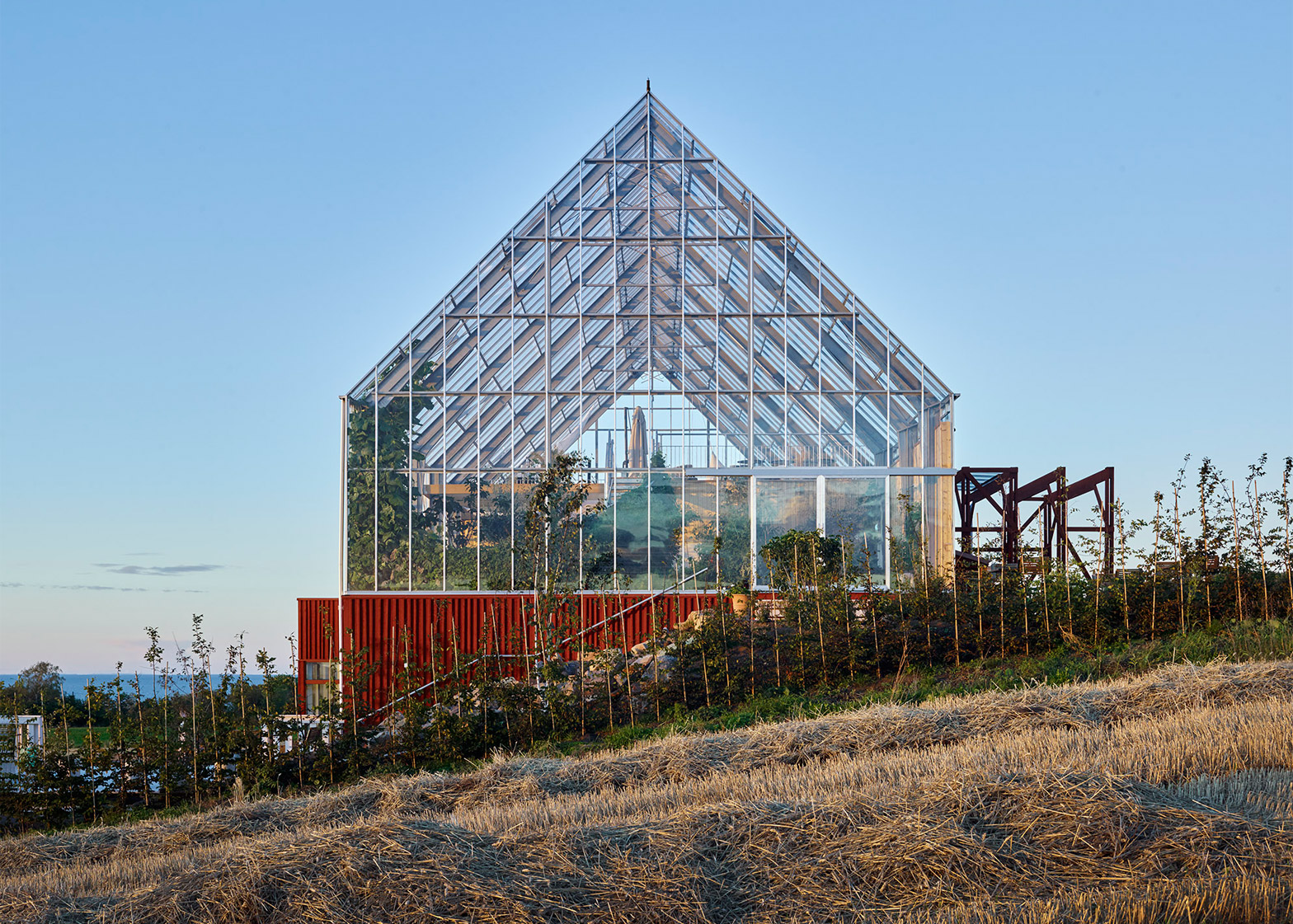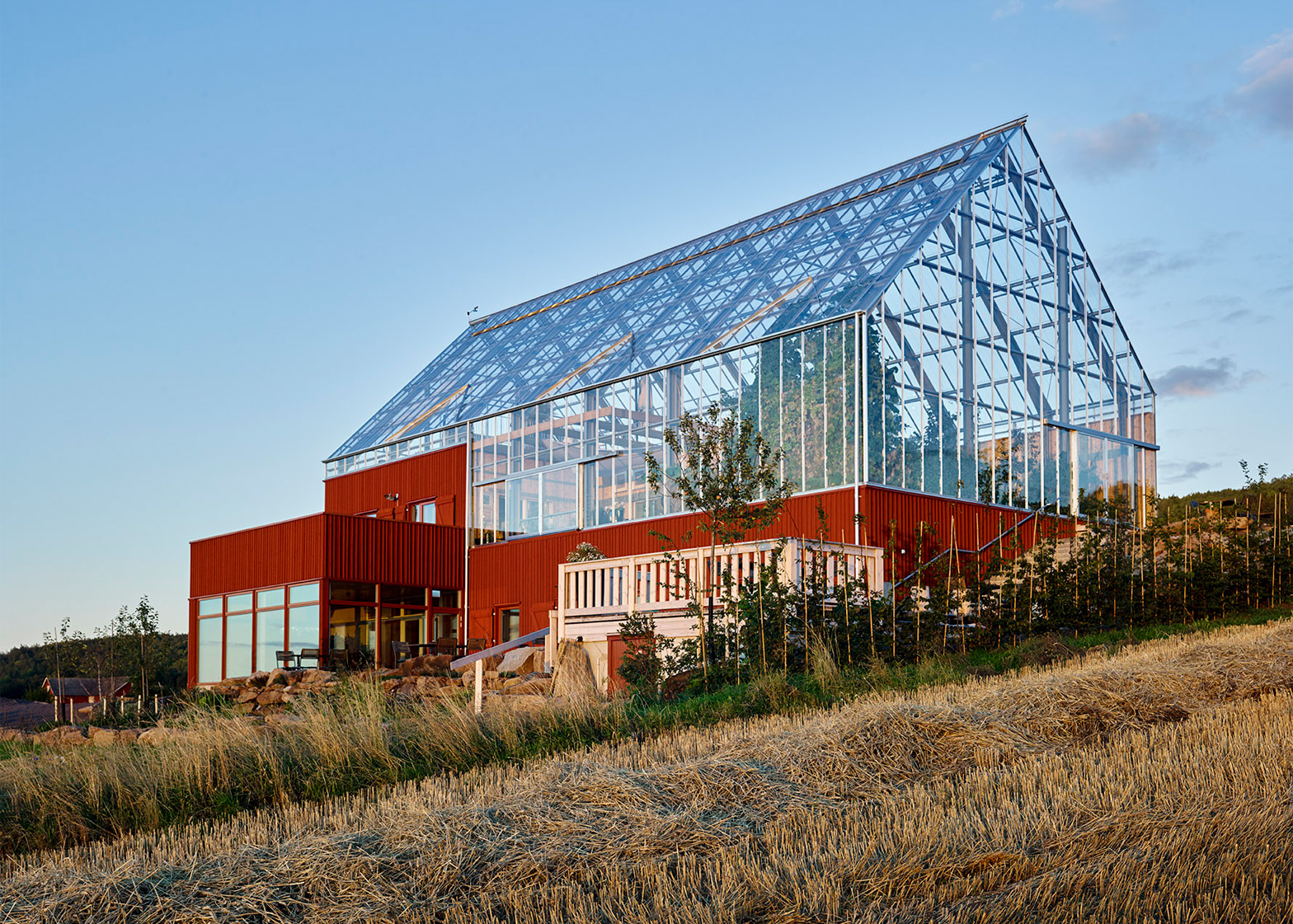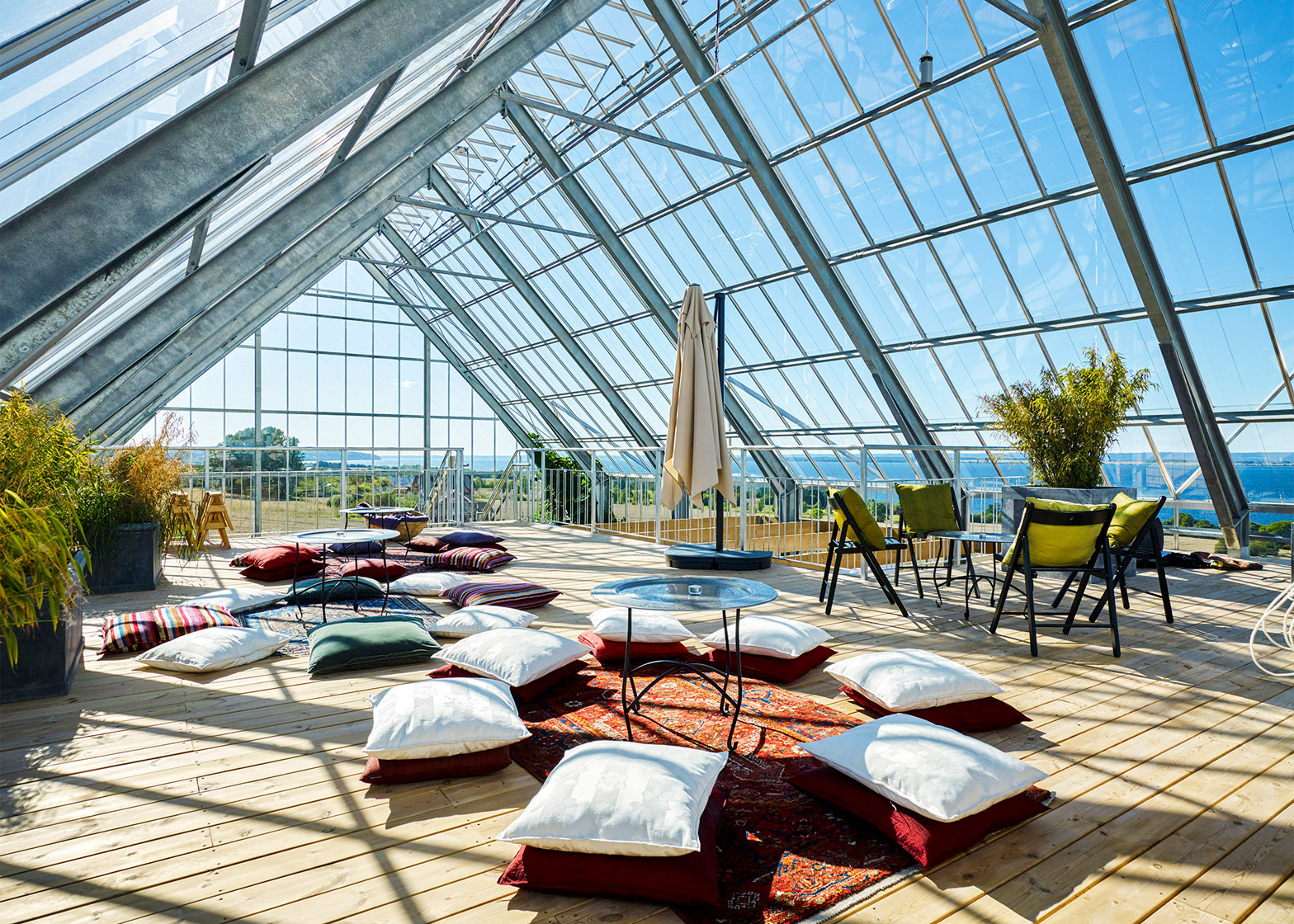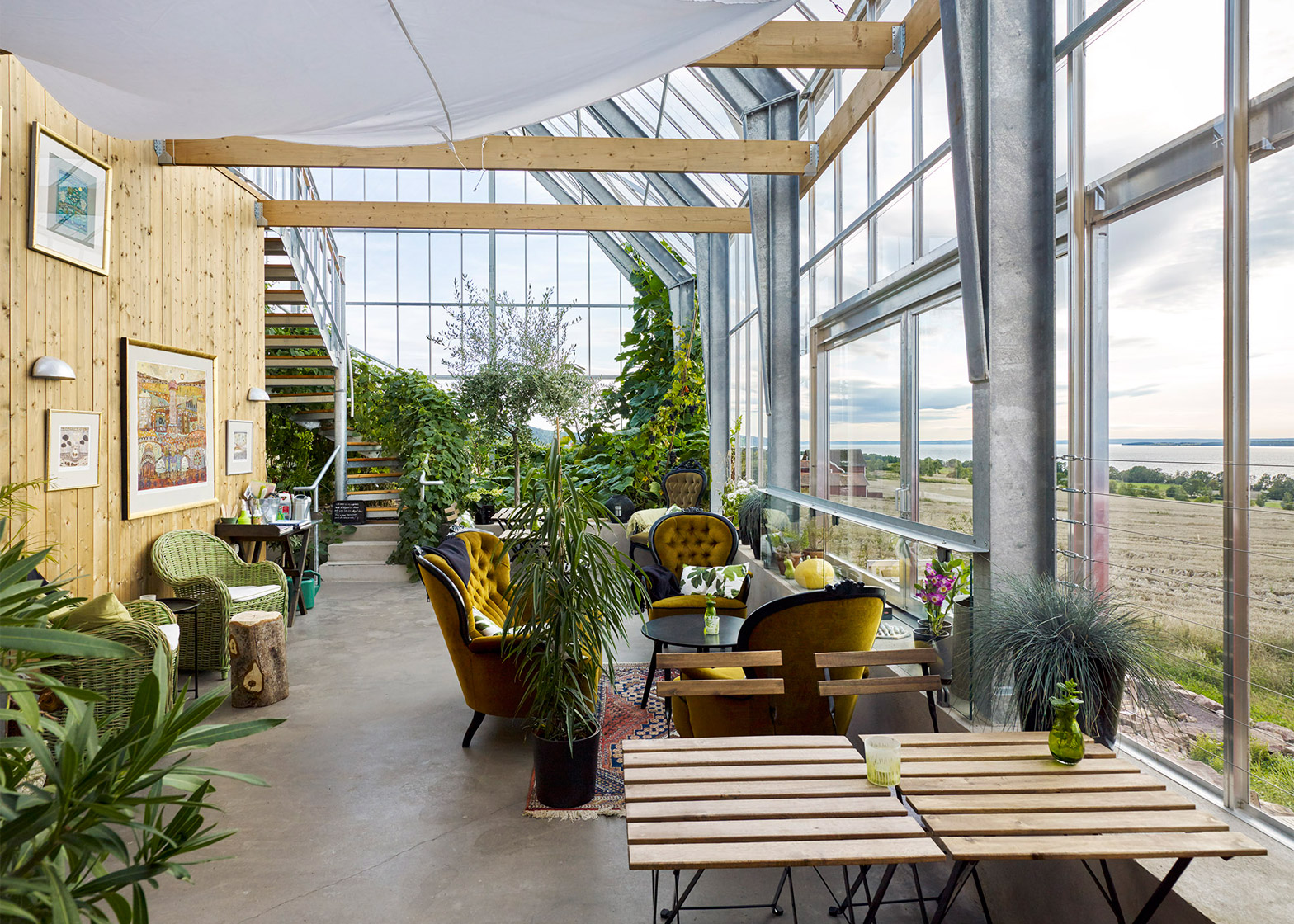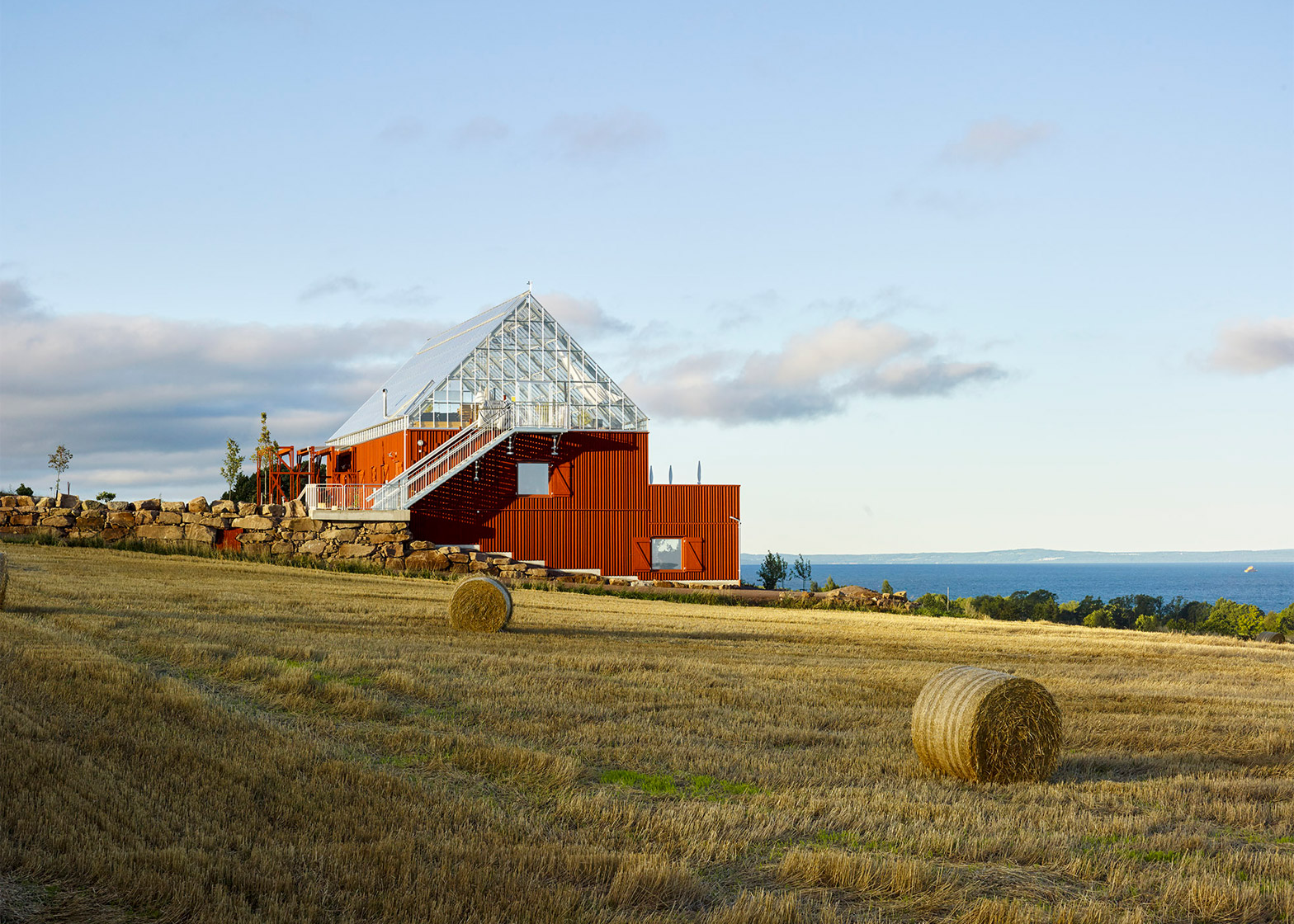Half greenhouse, half rust-coloured barn, this spa and events space by Tailor Made Arkitekter stands on the edge of Lake Vättern in southern Sweden (+ slideshow).
Designed by Gothenburg studio Tailor Made Arkitekter to replace an old barn, Uppgrenna Nature House takes its cues from traditional Swedish architecture, but also from greenhouses.
It is modelled on the Naturhus, or nature house, a sustainable housing concept developed by Swedish architect Bengt Warne in the 1970s.
Like Warne's original design, the Uppgrenna Nature House consists of a core living area surrounded by an insulating glass shell, creating a sheltered outdoor environment that is protected from the cold weather during the winter months.
Over 200 square metres of the building's 520-square-metre floor plan are within the giant greenhouse, which contains terraces with views over Lake Vättern.
"We were inspired by this 70s concept," said studio founder Fredrik Olson. "We have at the moment around 10 [similar] projects running."
"Nature houses consists of three parts: one, an insulated building; two, a greenhouse with fantastic, protected outdoor spaces; and three, a loop for recycling wastewater," he explained.
Dining and meeting facilities occupy a wooden mezzanine level below the pitched glass roof and a second lower terrace surrounded by planting, while a spa treatment room and guest bedroom are located in the timber base of the structure, which is partially sunken into a grassy slope.
The red cladding and shutters mimic the colouring typically given to Swedish barns and houses by Falu Rödfärg, a paint that originates from the Falun copper mine in Dalarna.
The colour is so popular that when Tham & Videgård attempted to design "Sweden's most statistically sought-after home" the firm created a mash-up of the nation's traditional red-painted timber cottages and a functional box.
Design studio Claesson Koivisto Rune also used the traditional paint to create the dark red to yellow ochre gradient on the timber walls of a house near Stockholm, while Max Holst used an earthy black shade of the traditionally red paint for a woodland villa.
"The exterior is portrayed with inspiration from traditional Swedish barn houses, with its simple doors and shutters," said Olson. "It creates dynamism with the facade and reduces heat radiation when the house is not in use."
A metal staircase affixed to the exterior of one side of the building provides direct access to the glass upper levels. Here, species of plants more typically associated with warmer climates take advantage of the insulated terraces.
Large plant beds containing vegetable and fruit plants are fed by nutrients from the building's sewage, creating a system that generates food and warmth rather than consuming it. Some of the produce appears on the restaurant's vegetarian menu, including pumpkin pie.
"The vision is to make a self-sustainable house that produces food, instead of waste," said Olson."Living in a greenhouse encourages a sustainable and non-toxic lifestyle."
"It becomes very clear why you should not emit pollutants in the environment, it turns back in to your own recycling system," he added.
Photography is by Ulf Celander.
Project credits:
Architects: Tailor Made Arkitekter
Architect in charge: Fredrik Olson
Collaborators: Greenhouse Living by Anders Solvarm, Niklas Dahlström


